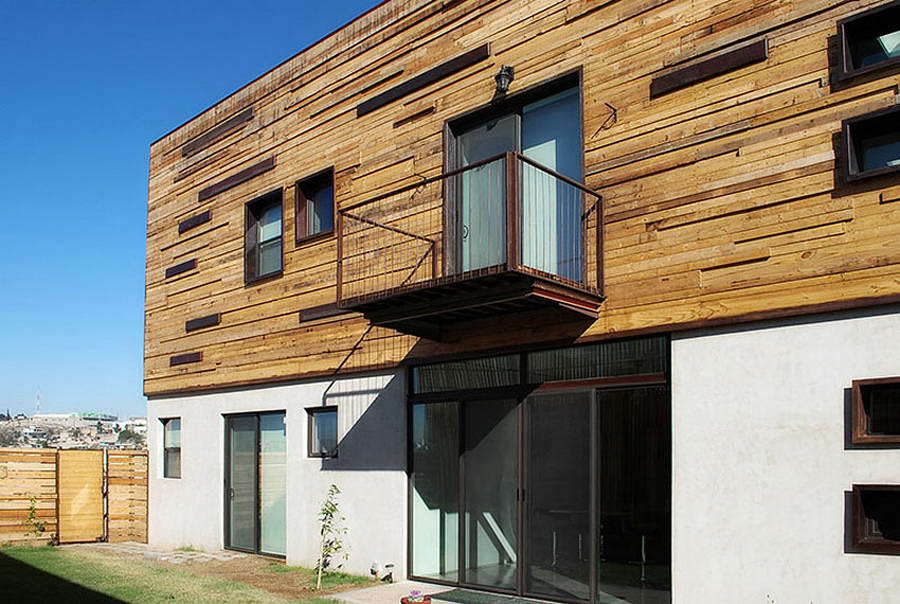#13482. Two-level house with contrasting facade: wood and stucco

This modern residential house showcases a striking example of contrasting facade design using natural wood. The upper section of the building is completely clad with wooden panels laid in a non-standard horizontal "overlapping" technique of varying widths and depths, creating a dynamic textured surface. This technique adds visual rhythm and volume to the facade, highlighting the natural beauty of the wood.
The lower level of the building contrasts with the upper one through minimalist white stucco, creating an interesting visual balance between the warm texture of wood and the cool smoothness of plastered surfaces. The architectural composition is complemented by a compact balcony with metal railing that protrudes from the wooden facade, adding depth and functionality to the building.
Window and door openings are finished in dark tones, effectively contrasting with both the wooden cladding and the light stucco. Large glass sliding doors on the ground floor provide a connection between the interior space and the small, well-maintained plot.
When designing your own facade, you can adopt several techniques: using a combination of materials to create visual interest, playing with textures to add depth, and clearly separating the functional zones of the house through different finishing materials. Wooden cladding requires regular maintenance but gives the building warmth and eco-friendliness that cannot be achieved with synthetic materials.